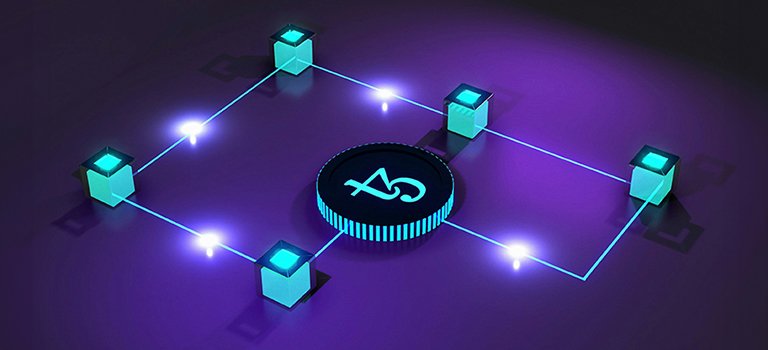The mysterious blockchain technology. Well, it was mysterious. In fact, at one point, it was futuristic. And there was so much hype around it, yet so many differences, that nobody really trusted it. But what happened? Blockchain technology moved from hype to the future. It’s something most people know about, understand, and are interested in the applications. And there are now thousands of applications, and the best ethereum price chart and bitcoin price chart show cryptocurrency and blockchain is thriving.
Plus, the statistics speak for themselves. Blockchain was worth $17.46 billion in 2023, up from $11.14 billion in 2022. And by 2023, in just six years, experts believe it’ll be worth $469.49 billion. A bit of a jump, but it’s doable. Those figures are a 59.9% CAGR between 2023-2030.
Why is it possible? Because blockchain applications and cryptocurrency adoption into traditional financial markets is growing.
Below, we’ll explore blockchain technology, taking you from the hype, the present, and into the future.
The Humble Blockchain Beginnings
2008 was a financial turmoil. The Great Recession. Financial crisis. Call it what you will, it was bad. But along came a cryptic message. This message preceded the birth of Bitcoin. At the time, it was a bit too groundbreaking, nobody trusted it. But Satoshi Nakamoto did. Nakamoto’s communication showed a revolutionary concept – a fully peer-to-peer currency devoid of intermediaries. And that’s exactly what it is.
Nakamoto’s introduction of Bitcoin ended up being more than intended. It isn’t just a digital currency, it’s a combination of cryptography, game theory, economics, and a suite of other sophisticated technologies. At the time, it was Bitcoin and decentralized technology. The rest of the world made it into what it is today.
The innovation wasn’t branded ‘blockchain’ initially, but Nakamoto’s blueprint laid the groundwork for a decentralized transaction system.
The Hype
Blockchain is the backbone of decentralized technology. There are thousands of blocks on the blockchain containing different information – but this information was once hype.
As a decentralized ledger, blockchain stores and tracks records transactions across a network of participants. They ensure that no single entity controls the narrative. And that’s the blockchain technology hype – nobody is in control, ‘everybody’ is in control. The nature of these records uses cryptographic mechanisms to guarantee their immutability. Again, that’s the hype.
As this technology grew, so did the spectrum of its applications. There are hundreds of applications affecting consumers, investors, brands, governments, and more.
The ascent of Ethereum, or ‘blockchain 2.0’, further expanded the horizon, introducing smart contracts and distributed computing to the blockchain database.
The Present
The present is, well, blockchain technology going wild. Even if it’s something that’s seemingly considered small now, like brands using Bitcoin as a payment method, the adoption is everywhere. It has matured, evolving both technologically and in governance. Just look at initiatives like Facebook’s Libra project. Well, Zuckerberg is a crypto advocate, but still, it shows the present is a change in opinions that we’ll all see the benefits of.
The technology’s promise has been acknowledged, with blockchain featuring in Gartner’s top 10 strategic technology trends. And everyone can trust Gartner.
The Future
As we gaze into the horizon, the trajectory of blockchain technology is not just set for evolution; it’s primed for a revolutionary leap. The year 2024 holds promises of unprecedented applications and transformative breakthroughs. Blockchain, once the linchpin of cryptocurrencies like Bitcoin, is now poised to infiltrate and innovate sectors far beyond its original domain.
Obviously, financial services are at the forefront. It’s already trying to take over. Decentralized finance (DeFi) is evolving into traditional finance – it’s evident with the introduction of spot BTC EFTs on traditional financial markets. There’s no doubt impending regulations that could change things, but for now, the future seems to be merging traditional financial markets with digital ones.
What To Look For in 2024
The supply chain sector is made for decentralized technology. It can ensure product authenticity and track commodity movement. And those are just two examples. By the end of 2024, the supply chain ecosystem will be more transparent and significantly more streamlined with decentralized technology.
Governments worldwide recognize blockchain’s potential in data storage and process optimization. In 2024, there are prospects for more streamlined, transparent, and secure governmental operations. Still, the government knows how to hide anything, and they’re always watching. Decentralized technology won’t keep us safe from that.
In healthcare, blockchain is emerging as an excellent tool for data integrity. Patient records and clinical trials should transition onto decentralized platforms if it works. But much like it took a decade to transfer from paper processes to digital, this one could take some time.
The Internet of Things (IoT) is perfect for blockchain. As devices communicate and share data autonomously, blockchain’s decentralized nature eliminates the need for central authority. In 2024, there could be a new era of connectivity.
Still, there’s obviously going to be challenges. The complexity and potential security vulnerabilities mean it’s not exactly something that’ll ever be adopted by everyone, unlike traditional technology. But perhaps it’s because it’s still in its infancy.
From hype to the future, blockchain is transformative. Embracing blockchain technology is becoming a necessity. And the allure of blockchain is everywhere. From central bank digital currencies that we haven’t even had a chance to talk about to business applications, the widespread adoption is crazy.
Tags: blockchain, Cryptocurrency, Technology


